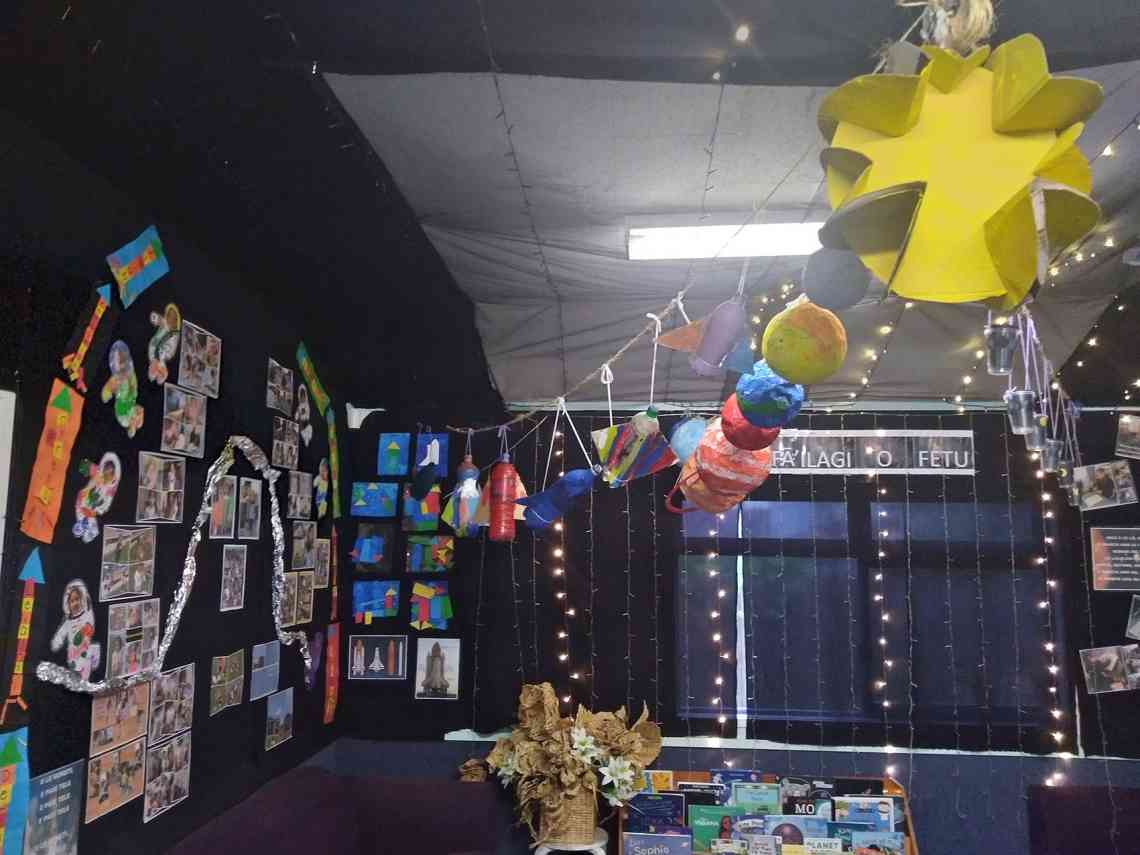
Since 2021, COMET has supported SAASIA (Sosaiete Aoga Amata Sāmoa i Aotearoa Inc) to create an inquiry-based learning approach to studying astronomy, embedded within Sāmoan culture and knowledge.
The project involved tamaiti aged 2–4 from Sāmoan preschools across west and south Auckland. Curious Minds funding in 2021 supported a pilot project with Taeaofou I Puaseisei Aoga Amata in Māngere and Tu Manu Ae Le Tu Logologo Aoga Amata in Papakura. The project was then extended into west Auckland through WeSTEM, which provided funding to Lupesina Aoga Amata in Glendene and AAPICA Centre in Avondale.
The enquiry had a strong Pasifika focus from the start, with the tamaiti studying how Sāmoans traditionally interpreted astronomical phenomena to influence their daily activities. Talanoa featured heavily as a learning pedagogy, with family and community members sharing stories, myths and songs about Sāmoans using observations of the sky to tell the time, predict weather events and identify the best time to harvest crops.
Stardome Observatory hosted the tamaiti on trips to learn about planets, stars and the phases of the moon. Dr Niven Brown, from the Auckland Astronomical Society, also visited the aoga amata to share his knowledge of astronomy. Dr Brown brought a large reflecting telescope that the children used to observe the sun and the moon. Children were also able to make observations using telescopes and binoculars purchased with Curious Minds and WeSTEM funding.
To help consolidate the learning, tamaiti created artworks and models of planets and stars to decorate a corner of their learning centre into an astronomical space. Some tamaiti also learnt songs and dances that they performed for their families, including the legend of Tala ‘I Le Mavaega A Sina, which tells the story of Sina's promise to create the moon.
An unexpected outcome of involving families was the joy that parents felt about sharing their cultural knowledge and seeing how much their children were eager to learn.
“[I learnt that] working together with my child in his learning could be fun and productive. The excitement for learning is infectious and we can build on this excitement and transfer it to any future learning” – Parent E
The introduction and use of Samoan terminology promoted learning for teachers and parents as well as tamaiti. By the end of the project, children were able to name the types of clouds, planets, stars and seasons in Samoan and English. Teachers also gained confidence in speaking Samoan and knowing that they could incorporate their cultural knowledge into STEM.
“A tangible benefit was the enquiry into the Samoan vocabulary to go with the subject. Not just the names of planets but also the days of the week and the seasons. Also, to have piqued an interest in the traditional stories is what scientific inquiry is all about” – Dr Niven Brown
For more STEM stories, check out our project showcases: